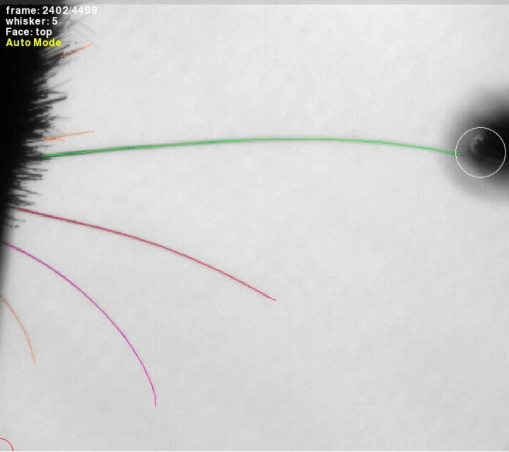Wednesday morning, I’m giving the first public presentation of my current work on sensory coding in the barrel cortex. The big picture question is, How does the cortex translate sensory input into perception and recognition of objects and their position?
To study this cortical function, we used a methodology with 3 critical components
1 – Goal-directed discrimination task
The activity of an awake cortex is profoundly different in character from an anesthetized cortex. There is also gathering evidence that the activity of sensory cortex when attending to and using its sensory input to perform a discrimiation is quite diffent from periods of inattention. We use a goal-directed discrimination task to enforce attention and to ensure the recorded activity is relevant to the fundamental function of the area.
2 – High speed neural recording techniques
Spikes are the words in the language of cortex. We must record them with high fidelity and temporal precision. We can then use correlation of neural activity to sensory input to try to understand what the cells are saying.
3 – Precise measurement of sensory input
If we are to use correlational techniques to describe the language of cortex, we must match the millisecond precision of cortical communication with millisecond precision in measuring the exact sensory input.
Within the rodent, no study has yet combined all three components, goal directed discrimination behavior, millisecond precision neuronal recordings and millisecond precision sensory input recordings.
Anyway, if you want to hear more, try to get up in time to make it to the conference by 8:45AM.
| Program#/Poster#: | 750.04 |
| Presentation Title: | Encoding of vibrissal sensory input and task-related variables in the mouse barrel cortex during whisker-based object localization |
| Location: | 152B |
| Presentation time: | Wednesday, Nov 16, 2011, 8:45 AM – 9:00 AM |

Leave a comment